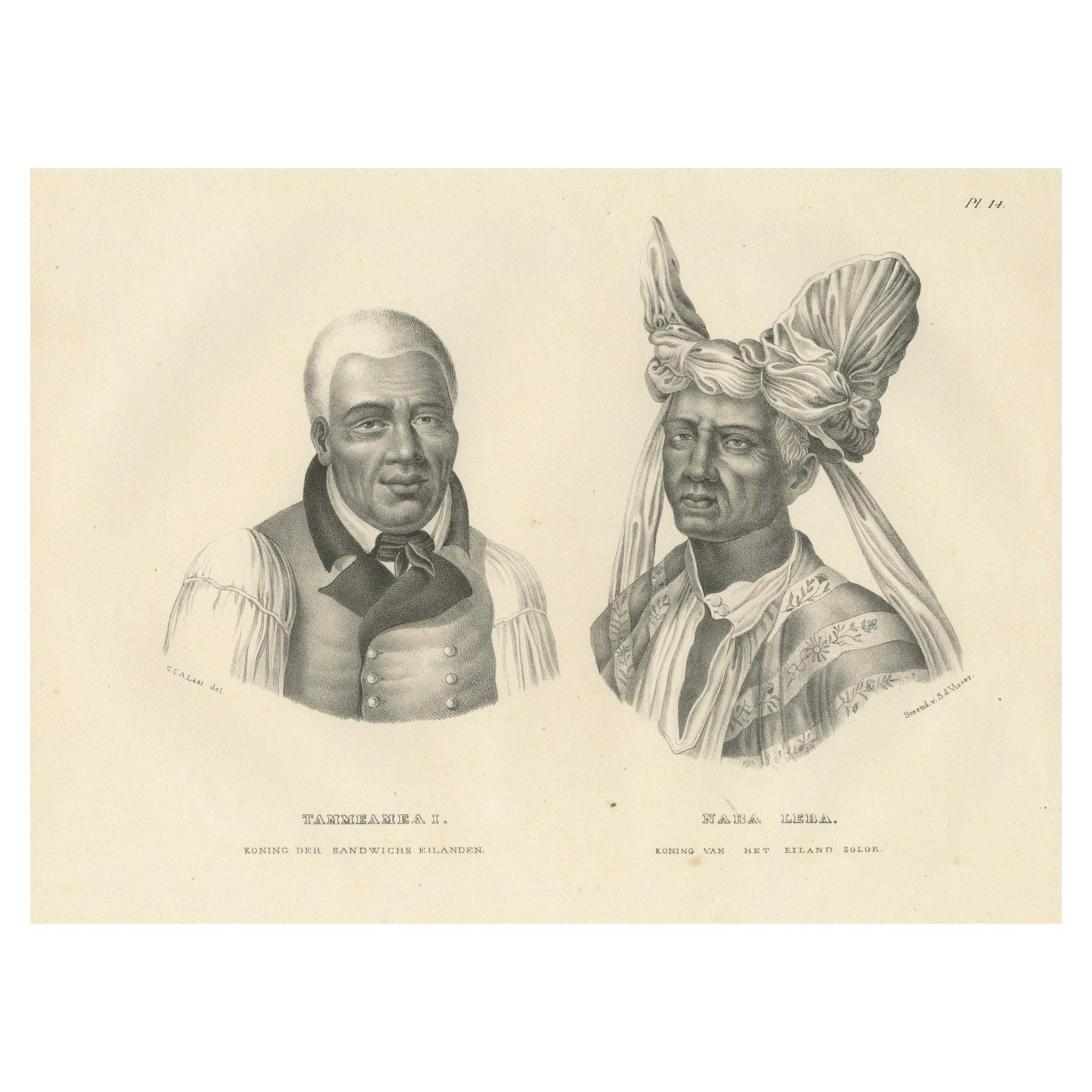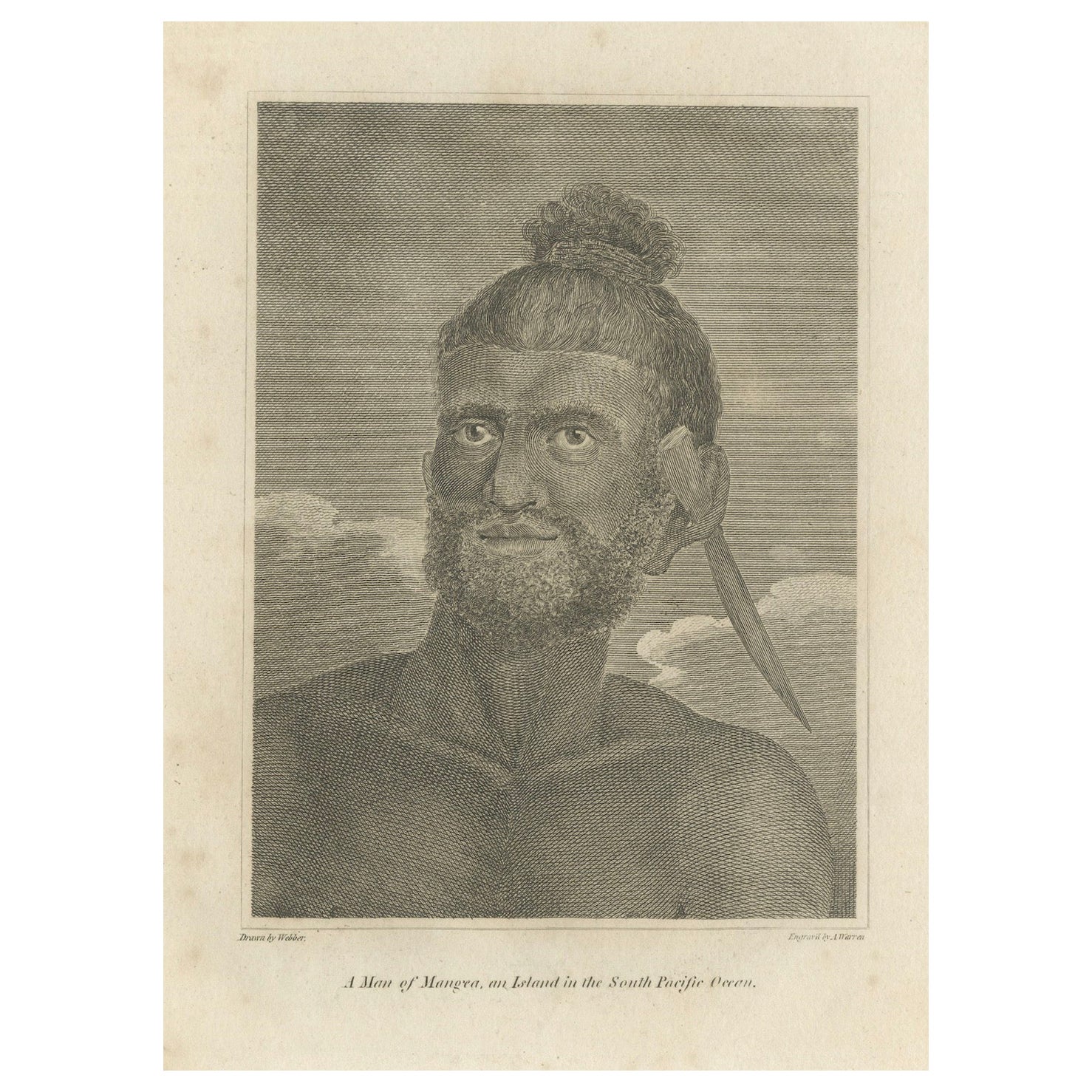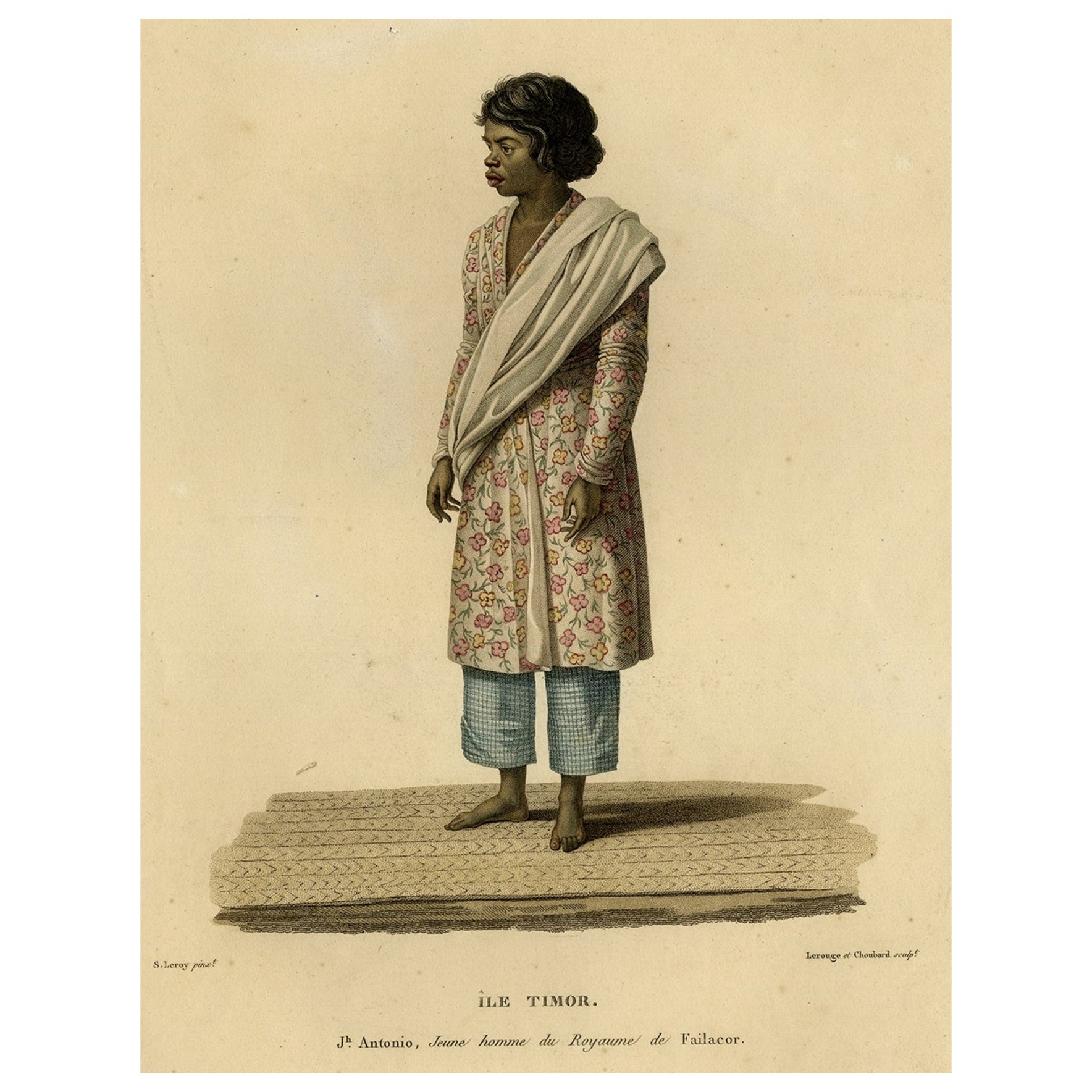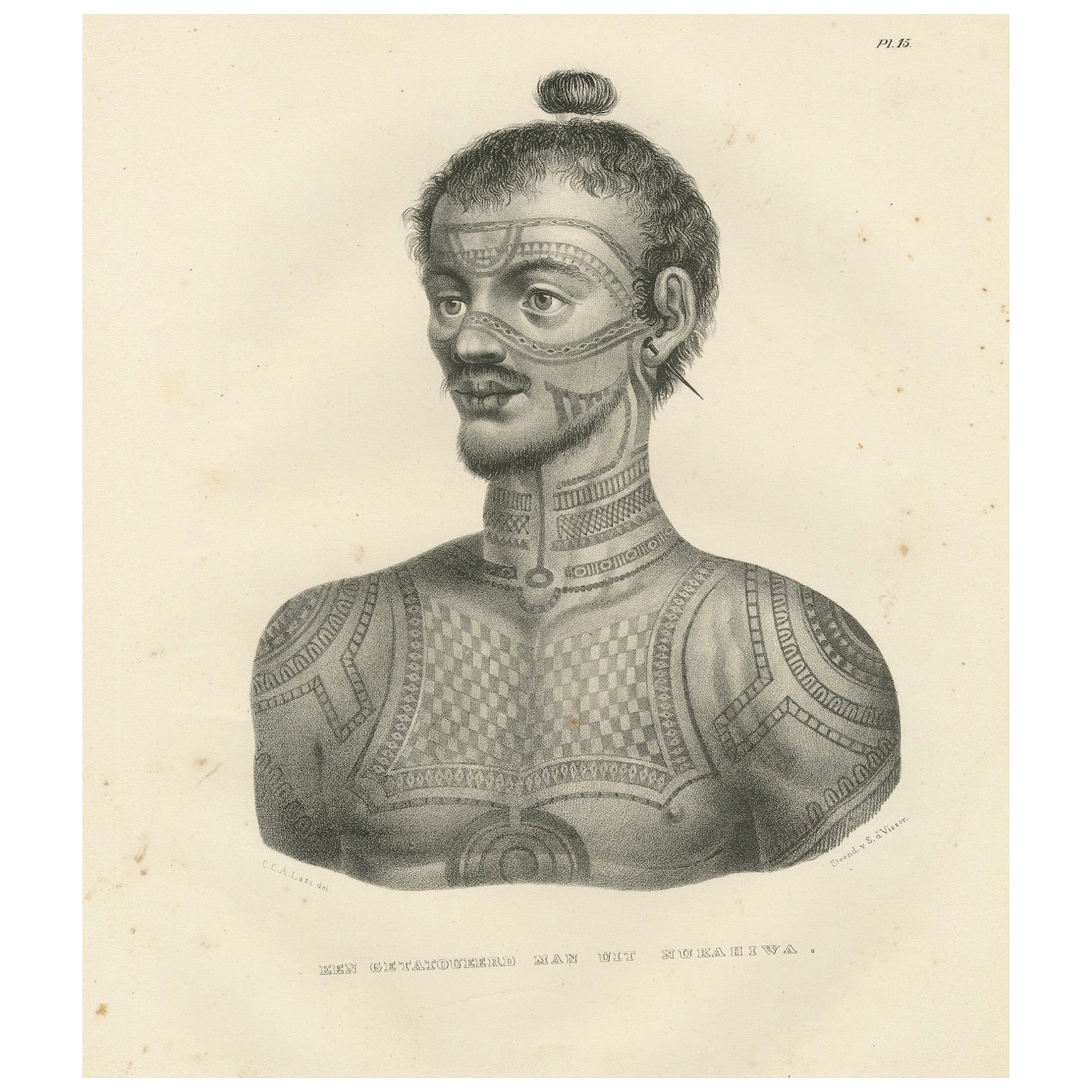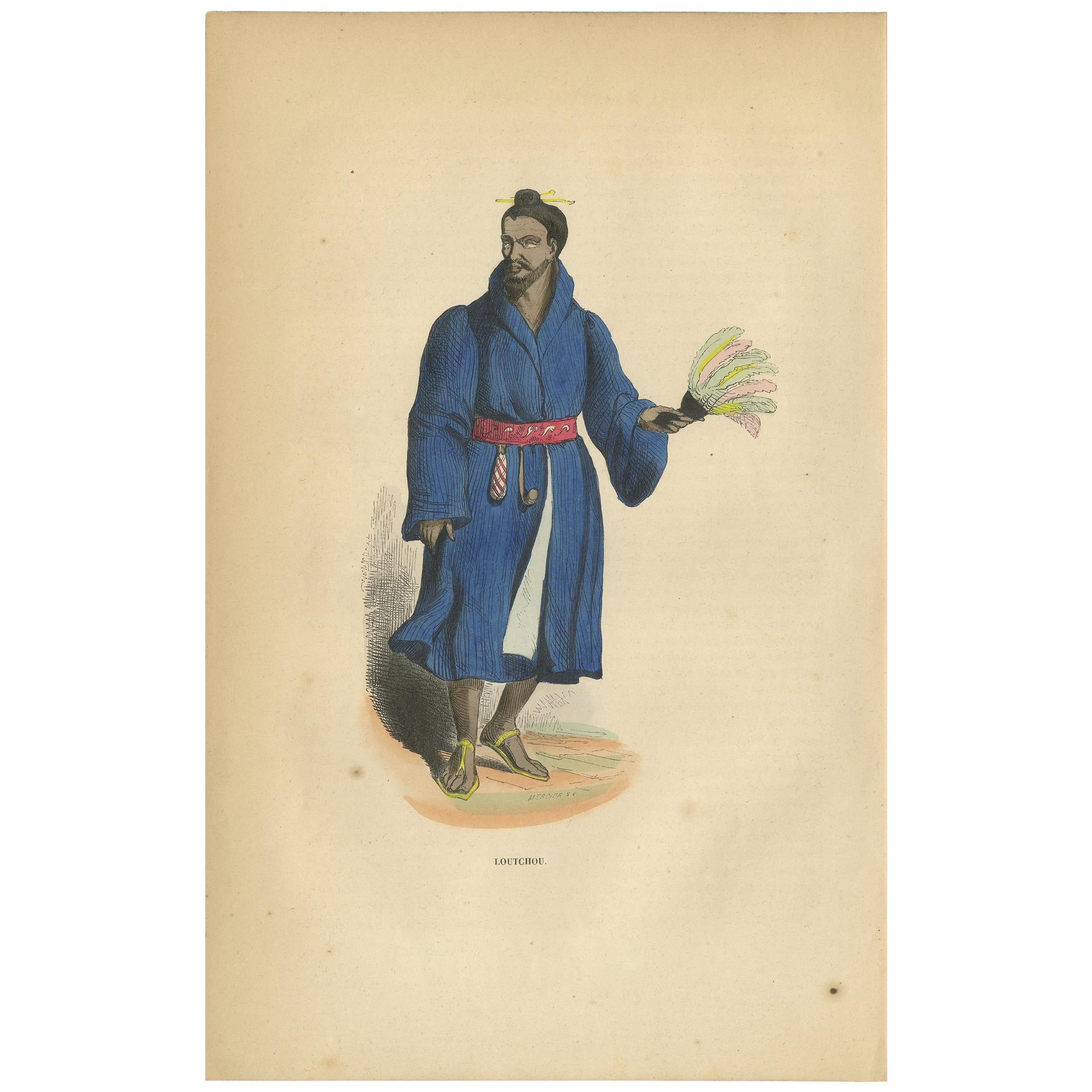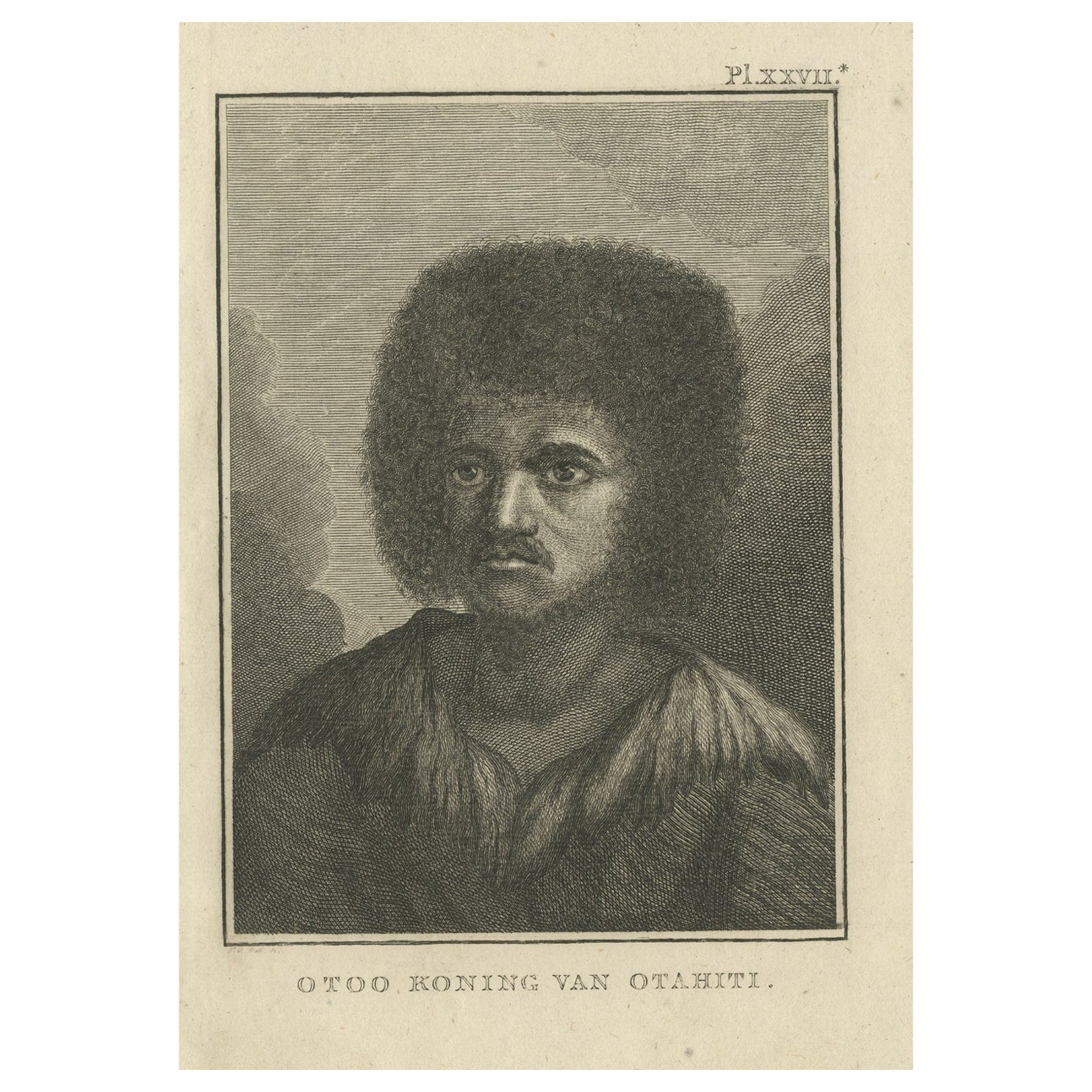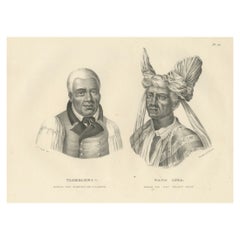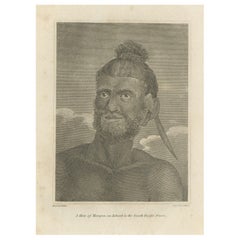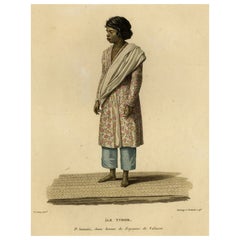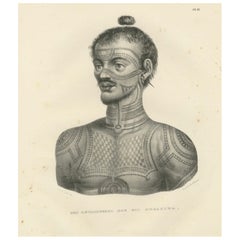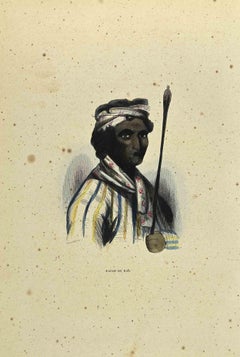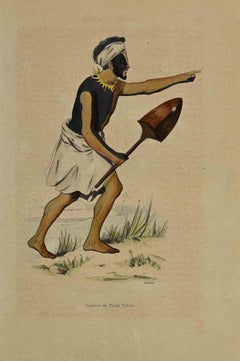Items Similar to Portrait of Omai, a Polynesian Man, by Karl Joseph Brodtmann, 1835
Want more images or videos?
Request additional images or videos from the seller
1 of 7
Portrait of Omai, a Polynesian Man, by Karl Joseph Brodtmann, 1835
$420.15
$525.1920% Off
£313.50
£391.8720% Off
€352
€44020% Off
CA$585.88
CA$732.3520% Off
A$642.04
A$802.5520% Off
CHF 335.28
CHF 419.1120% Off
MX$7,715.52
MX$9,644.4020% Off
NOK 4,191.64
NOK 5,239.5520% Off
SEK 3,953.39
SEK 4,941.7320% Off
DKK 2,679.83
DKK 3,349.7920% Off
About the Item
This lithograph, titled Omai, by Karl Joseph Brodtmann, is an example of the artist’s ethnographic studies, showcasing a portrait of Omai, a notable figure from Polynesia who visited Europe in the 18th century. This work highlights Brodtmann’s interest in portraying individuals from distant lands, focusing on their unique cultural attire and expressions.
Description:
The portrait represents Omai, a Polynesian man who gained historical significance during the 18th century as one of the first Polynesians to travel to Europe. Omai (also known as Mai) was a central figure in the encounters between Polynesian and European cultures, having been brought to England by Captain James Cook in the 1770s.
- Clothing: Omai is depicted in an elegant wrap of flowing fabric, draped around his shoulders and tied in a loose, elegant fashion. His head is adorned with a large turban, a stylistic interpretation that may have been influenced by European artistic conventions when portraying foreign dignitaries or exotic figures. The fabric's folds and shading add a sense of depth and texture, showcasing Brodtmann’s mastery of lithography.
- Expression: Omai’s expression is poised and dignified, with his gaze directed slightly off to the side. The sense of serenity and composure in his face is typical of the European portrayals of him as an "exotic noble savage," a term that reflects the European fascination with non-Western peoples during the age of exploration.
The lithograph highlights both the individuality of Omai and the cultural significance of his travels to Europe, where he became a symbol of cross-cultural exchange and curiosity during the 18th century.
Maker:
Karl Joseph Brodtmann (1787–1862), the Swiss lithographer, was known for his detailed illustrations of people from various cultures, natural history subjects, and scientific studies. His ethnographic works were part of a broader effort in 19th-century Europe to document the physical and cultural characteristics of peoples encountered through exploration. Brodtmann’s portraits often struck a balance between realism and the romanticized European views of non-Western cultures.
Technique and Style:
Brodtmann created this portrait using lithography, a technique that allowed him to achieve fine details and subtle gradations of light and shadow. His style in this portrait combines realism with the romanticized ideal of the "exotic," particularly in the way Omai is dressed in flowing garments, which may not be entirely representative of traditional Polynesian dress but rather influenced by European artistic conventions of depicting foreign figures.
The shading in the folds of the fabric, as well as the detailed rendering of Omai’s facial features, showcases Brodtmann’s technical skill in capturing texture and expression, enhancing the overall sense of dignity and presence in the portrait.
Cultural Context:
Omai was a central figure in 18th-century European exploration history. He was a native of Ra'iatea, an island in French Polynesia, and accompanied Captain Cook back to England during Cook’s second voyage to the Pacific. In England, Omai was introduced to European high society and became something of a celebrity, admired for his intelligence, charm, and exotic background. His presence in Europe sparked fascination and intrigue about the cultures of the Pacific Islands.
This portrait would have been part of a European ethnographic collection that sought to document and study non-Western peoples, reflecting the European interest in the "exotic" and the encounters with new cultures during the age of exploration.
Omai returned to the Pacific in 1776, but his legacy lived on in European art, literature, and science, where he was often depicted as a symbol of the meeting between the Old World and the New.
- Dimensions:Height: 12.8 in (32.5 cm)Width: 10.24 in (26 cm)Depth: 0 in (0.02 mm)
- Materials and Techniques:
- Period:
- Date of Manufacture:1835
- Condition:Condition: good, given age. General age-related toning and/or occasional minor defects from handling. Some stains along the right border, not affecting the image. Please study scan carefully.
- Seller Location:Langweer, NL
- Reference Number:Seller: BG-13176-131stDibs: LU3054341515602
About the Seller
5.0
Recognized Seller
These prestigious sellers are industry leaders and represent the highest echelon for item quality and design.
Platinum Seller
Premium sellers with a 4.7+ rating and 24-hour response times
Established in 2009
1stDibs seller since 2017
2,655 sales on 1stDibs
Typical response time: <1 hour
- ShippingRetrieving quote...Shipping from: Langweer, Netherlands
- Return Policy
Authenticity Guarantee
In the unlikely event there’s an issue with an item’s authenticity, contact us within 1 year for a full refund. DetailsMoney-Back Guarantee
If your item is not as described, is damaged in transit, or does not arrive, contact us within 7 days for a full refund. Details24-Hour Cancellation
You have a 24-hour grace period in which to reconsider your purchase, with no questions asked.Vetted Professional Sellers
Our world-class sellers must adhere to strict standards for service and quality, maintaining the integrity of our listings.Price-Match Guarantee
If you find that a seller listed the same item for a lower price elsewhere, we’ll match it.Trusted Global Delivery
Our best-in-class carrier network provides specialized shipping options worldwide, including custom delivery.More From This Seller
View AllPortraits of Tammeamea I of Hawaii and Naba Leba of Solor by Brodtmann, 1836
Located in Langweer, NL
This lithograph by Karl Joseph Brodtmann depicts two important leaders from the Pacific and Southeast Asia regions: Tammeamea I, King of the Sandwich Islands (now known as Hawaii), a...
Category
Antique 1830s Swiss Prints
Materials
Paper
$393 Sale Price
25% Off
Portrait of a Mangean Islander in The South Pacific by John Webber, circa 1800
Located in Langweer, NL
A head and shoulders frontal portrait of a man named by Cook as Mourua, of Mangaia, Cook Islands, visited by Cook in March 1777.
Title: "Portrait of a Mangean Islander by John Webbe...
Category
Antique Early 1800s Prints
Materials
Paper
$133 Sale Price
20% Off
Rare Full-Length Portrait of a Native from the Indonesian Island Timor, 1825
Located in Langweer, NL
Antique print, titled: 'Ile Timor.' - ('Timor Island').
Full-length portrait of a native female from the Indonesian island Timor. Source: 'Voyage autour du monde sur les corvette...
Category
Antique 1820s Prints
Materials
Paper
$420 Sale Price / item
20% Off
A Tattooed Man from Nuku Hiva, French Polynesia, by Karl Joseph Brodtmann, 1836
Located in Langweer, NL
This lithograph by Karl Joseph Brodtmann presents a tattooed man from Nuku Hiva, an island in the Marquesas Islands, located in French Polynesia. The artwork captures the intricate a...
Category
Antique 1830s Prints
Materials
Paper
$393 Sale Price
25% Off
Print of a Man of the Lou-Tchou Islands (RyuKyu Islands or now Okinawa), Japan
Located in Langweer, NL
Antique costume print titled 'Loutchou'. Original antique print of a man of the Lou-Tchou Islands (RyuKyu Islands or modern Okinawa). This print originates from 'Moeurs, usages et co...
Category
Antique Mid-19th Century Prints
Materials
Paper
Original Antique Engraving of Otoo, King of Tahiti, by Cook, 1803
By James Cook
Located in Langweer, NL
Antique print titled 'Otoo Koning van Otahiti'. Antique print depiciting Otoo, King of Tahiti. Originates from 'Reizen Rondom de Waereld door James Cook (..)'.
Artists and Engrave...
Category
Antique 19th Century Prints
Materials
Paper
$229 Sale Price
20% Off
You May Also Like
Rajaah de Dao - Lithograph by Auguste Wahlen - 1844
Located in Roma, IT
Rajaah de Dao is a hand colored lithographs realized by Auguste Wahlen in 1844.
Good conditions.
The artwork belongs to the Suite Moeurs, usages et costumes de tous les peuples du ...
Category
1840s Modern Figurative Prints
Materials
Lithograph
Emma Malietoa, 19th century Samoa portrait engraving print
Located in Melbourne, Victoria
'Emma Malietoa'
Portrait of Samoan woman Emma Malietoa, daughter of Chief Malietoa, of Apia, Upolu Island, Samoa.
From Narrative of the United States Exploring Expedition ... / Cha...
Category
Mid-19th Century Naturalistic Portrait Prints
Materials
Engraving
Guerrier de Tonga Tabou - Lithograph by Auguste Wahlen - 1844
Located in Roma, IT
Guerrier de Tonga Tabou is a hand colored lithograph realized by Auguste Wahlen in 1844.
Good condition.
The artwork belongs to the Suite Moeurs, usages et costumes de tous les peu...
Category
1840s Modern Figurative Prints
Materials
Lithograph
Jeune Fille de l'ile Pitcairn - Lithograph by Auguste Wahlen - 1844
Located in Roma, IT
Jeune Fille de l'ile Pitcairn is a hand colored lithograph realized by Auguste Wahlen in 1844.
Good conditions.
The artwork belongsto the Suite Moeurs, usages et costumes de tous l...
Category
1840s Modern Figurative Prints
Materials
Lithograph
A Man of Mangea 1784 final voyage of Captain Cook by John Webber
By John Webber
Located in Paonia, CO
A Man of Mangea is from the 1784 First Edition Atlas Accompanying Capt. James Cook and King; Third and Final Voyage of Captain James Cook. John Webber (1752-1793) was the official a...
Category
1780s Realist Portrait Prints
Materials
Engraving
Noukahiwa - Lithograph by Auguste Wahlen - 1844
Located in Roma, IT
Noukahiwa is a hand colored lithographs realized by Auguste Wahlen in 1844.
Good conditions.
The artwork belongsto the Suite Moeurs, usages et costume...
Category
1840s Modern Figurative Prints
Materials
Lithograph
More Ways To Browse
French Polynesia
Used Bridal Veil
Used Tennis Balls
Venetian Bombe
Vintage Apple Blossom
Vintage Asian Art Panels
Vintage Black Ceramic Cats
Vintage Blanket Basket
Vintage Brass Tiger
Vintage Brown Snuff Bottles
Vintage Ceramic Leopard
Vintage Ceramic Rabbits
Vintage Decoupage Paper
Vintage Electric Iron
Vintage Horn Table
Vintage Ibis
Vintage Marble Top Garden Table
Vintage Room Thermometer
